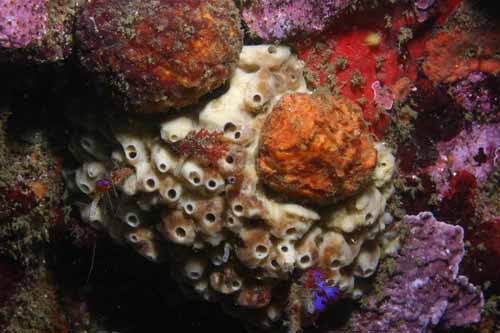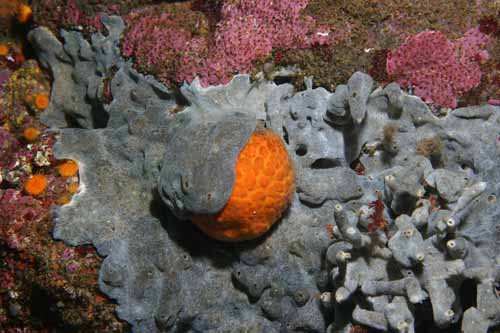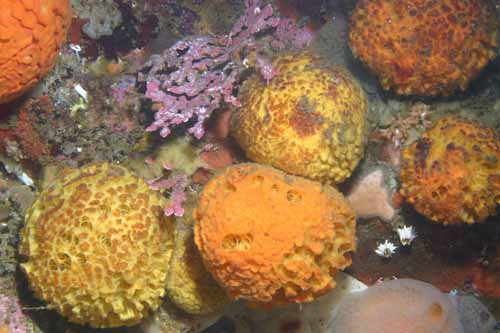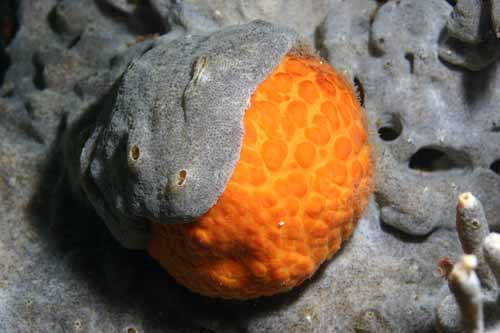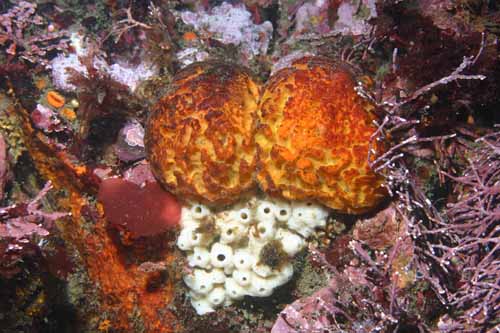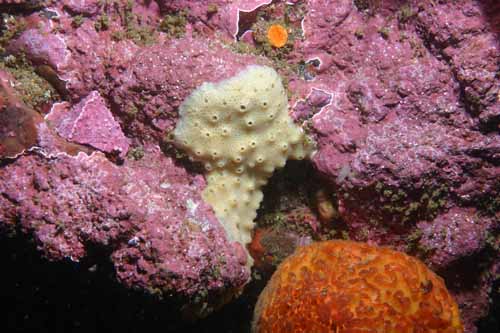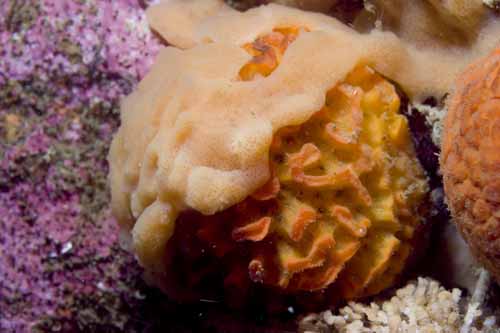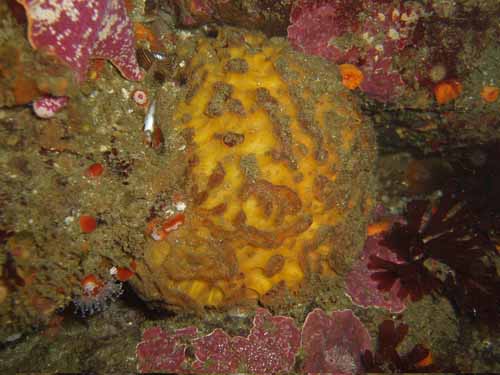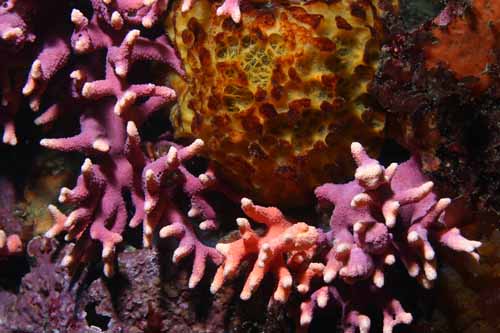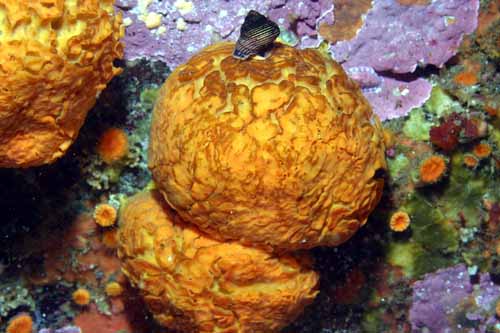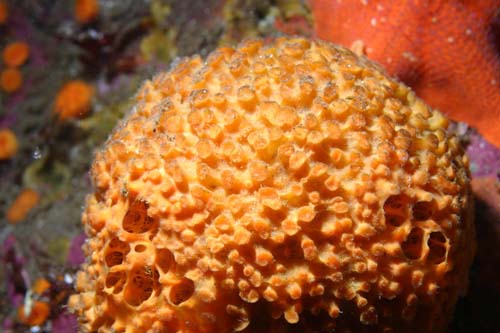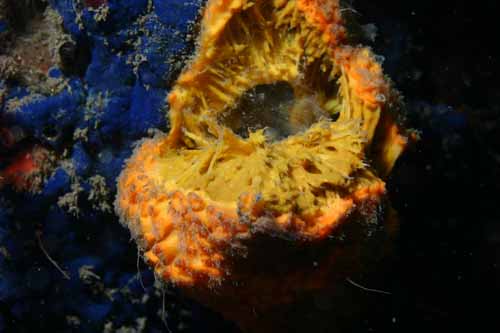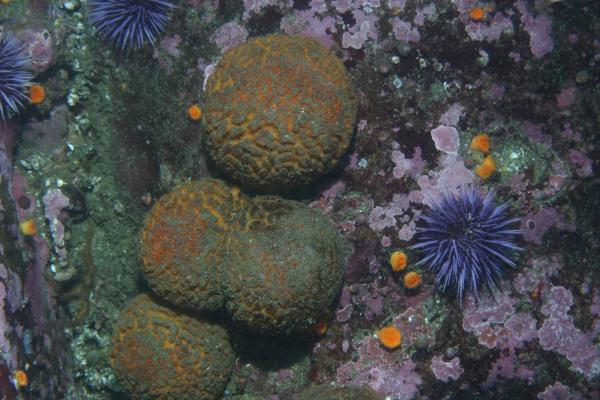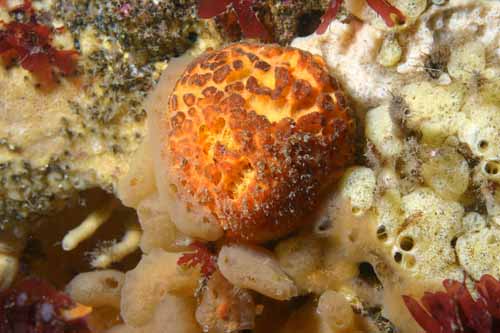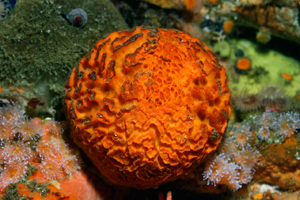
Orange puffball sponge
Tethya californiana
Overview
Key Features:
Bright orange color and spherical shape.Primary Common Name:
Orange puffball spongeSynonymous name(s):
Tethya aurantia, Tethya aurantia var. californianaGeneral Grouping:
SpongesGeographic Range:
British Columbia to the Gulf of California
British Columbia, Canada to southern California, including the Gulf of CaliforniaIntertidal Height:
-2 to -1 feet (-0.6096 to -0.3048 meters)Notes:
Low intertidal, in crevices and tide pools.Subtidal Depth Range:
Minimum Depth: 0 meters or 0 feetMaximum Depth: 440 meters or feet
Notes:
Often seen in kelp forests.Habitats:
bay (rocky shore), Continental shelf, continental slope, exposed rocky shore, kelp forest, protected rocky shore, seamount, submarine canyonNotes:
Low intertidal to subtidal depths reaching 440 m.Abundance:
Relative Abundance:
Very commonSpecies Description:
General:
Individuals are spherical or sub-spherical, generally the size of a tennis ball (to 8 cm diameter) and bright orange to golden. The surface is crenulated, with sinuous furrows and raised ridges, about 2-4 mm wide and a few mm high. This can vary depending on the conditions and between individuals.Distinctive Features:
This is a member of the Demospongiae, the class of sponges that makes up 80% of known sponges, which may lack spicules, but if present they are made of silica and not calcium carbonate. Tethya has siliceous spicules but the overall feel is very spongy and soft.Size:
Spherical diameter: up to 8 cmNatural History:
General:
The orange puffball sponge is the most commonly known subtidal sponge in central California. Commonly seen in kelp forests attached to the rocky reef, these sponges are easily identified by their spherical shape, bright orange color, and rough surface. In some cases the sessile sponges are overgrown with compound tunicates or fast-growing algae.Like many sponges, Tethya can reproduce both sexually and asexually. Eggs are internally fertilized but then released into the water column to complete development and eventually settle out. This process takes only 2-3 days. Interestingly, multiple larvae may settle in an aggregation and form a composite sponge, made up of several distinct genotypes. It can also reproduce asexually by forming stalked buds that release into the water column. Or a basal stolon may expand onto the surrounding substrate and form a new sphere, which will remain attached to the parental sphere.
Predator(s):
Predators include nudibranchs.Prey:
Sponges are sessile suspension feeders.Feeding Behavior:
Sessile suspension feederNotes:
Choanocytes (collar cells) use a flagellum to generate currents, pulling water into tiny pores and then filtering the water, removing plankton and organic detritus. The filtered water is then expelled through an osculum (plural oscula), ejected beyond the boundary layer to avoid recirculation.Issues
Monterey Bay National Marine Sanctuary:
None known.References
- Carlton, J.T. 2007.
The Light and Smith Manual, 4th edition
Intertidal Invertebrates from Central California to Oregon
University of California Press. 1001 p.
- Morris, R.H., D.P Abbott, and E.C. Haderlie. 1980. Intertidal Invertebrates of California. Stanford University Press, Stanford, California. 690 p.
Related Information
Photo Library
Click on an image below to view a larger version in the SIMoN Photo Library. You will also be able to view important information on each photo such as photographer, date, caption and more
